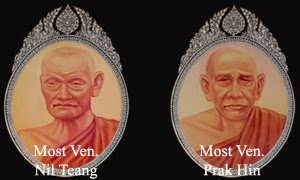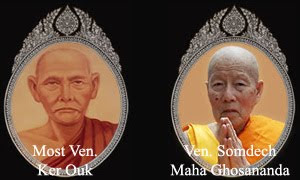
Buddha’s Birth
The Buddha was born as Siddhatta on the day of the full moon in the month of Visakha in 623 B.C.E., in Lumbini Park at Kapilavatthu, a place where Indian borders of present Nepal. His father was King Suddhodana, a virtuous king of the Sakya dynasty, and his mother was Queen Maha Maya. His mother passed away seven days after his birth and from then on, Maha Pajāpati Gotami took care of Siddhatta. ‘Siddhatta’ means ‘one whose aim is accomplished’. Later on, Siddhatta took several names like ‘Sakyamuni’ (the sage of the Sakya clan) after His Enlightenment; ‘Gotama’, which refers to the descendant of the sage Gotama and ‘Bhagava’, which means ‘Blessed One’.
In spite of all these names, the Buddha liked to refer to himself as ‘Tathagata’ (teacher). However, all the above names corroborate to the single name, ‘The Buddha’, which means ‘Enlightened One’ or ‘Awakened One’.
After Siddhatta’s birth, one day the great sage Asita came to see the little prince. When he took the child in his arms, he turned his feet on the sage’s head. The sage noticed some birthmarks on the feet of the child and exclaimed, “This Prince will become a very great Teacher in this world”.
Later on, one of the wise men in the king’s court, named Kondanna remarked, “this Prince will be the Buddha and nothing else”. Siddhatta was a pensive child and he used to sit cross-legged and practice on the breath-on exhalations and inhalations.
This helped him to gain the one-pointedness of mind called ‘Samadhi’. Thus, he developed the First ‘Jhana’ (Ecstasy) as a child. Prince Siddhatta was a quick learner and he excelled in all arts.
His father dreaded the idea of his son becoming a saint and so he never gave him an opportunity to see the worse side of life. At the age of sixteen, Siddhatta married the beautiful Yasodhara and lead a luxurious life. However, his chance encounter with an old man, a diseased person, a corpse, and a dignified hermit, changed his life.
Buddha’s Enlightenment
He decided to leave worldly pleasures in search of Truth and Eternal Peace. Even the birth of his son Rahula did not make him happy. He left the palace and wore the yellow robes of monks and became an ascetic and concentrated all his energies on the quest for Truth.
The Buddha was called ‘Bodhisatta’ (one who is aspiring to attain Buddhahood) before His Enlightenment. The Buddha attained Enlightenment on the day of the full moon in the month of Visakha, under the Bodhi tree at Bodh Gaya. He found real peace, happiness, and freedom. He received a higher understanding of everything above the human level and He became perfect.
Buddha’s Parinibbana
The Buddha propagated the doctrine of Dhamma far and wide and exhorted His disciples to help people attain happiness and welfare. In 543 B.C.E.E. at the age of eighty, the Buddha passed away. That is, He had attained ‘Parinibbana’ at Kusinaracity of Malla Kings.
‘Nibbana’ is the state of calmness and tranquility in which passion and sorrow are completely eradicated. There were two ‘Nibbanas’ in the life of the Buddha, the first one, called ‘Upadisesa Nibbana’ (cessation of consciousness and feeling), while He was alive, and the second one, called ‘Anupadisesa Nibbana’ (attainment of Eternal Bliss), which He attained with His death.
The teachings of the Buddha spread through His disciples in different parts of the world and now Buddhism remains one of the major religions in the world.





0 comments:
Post a Comment